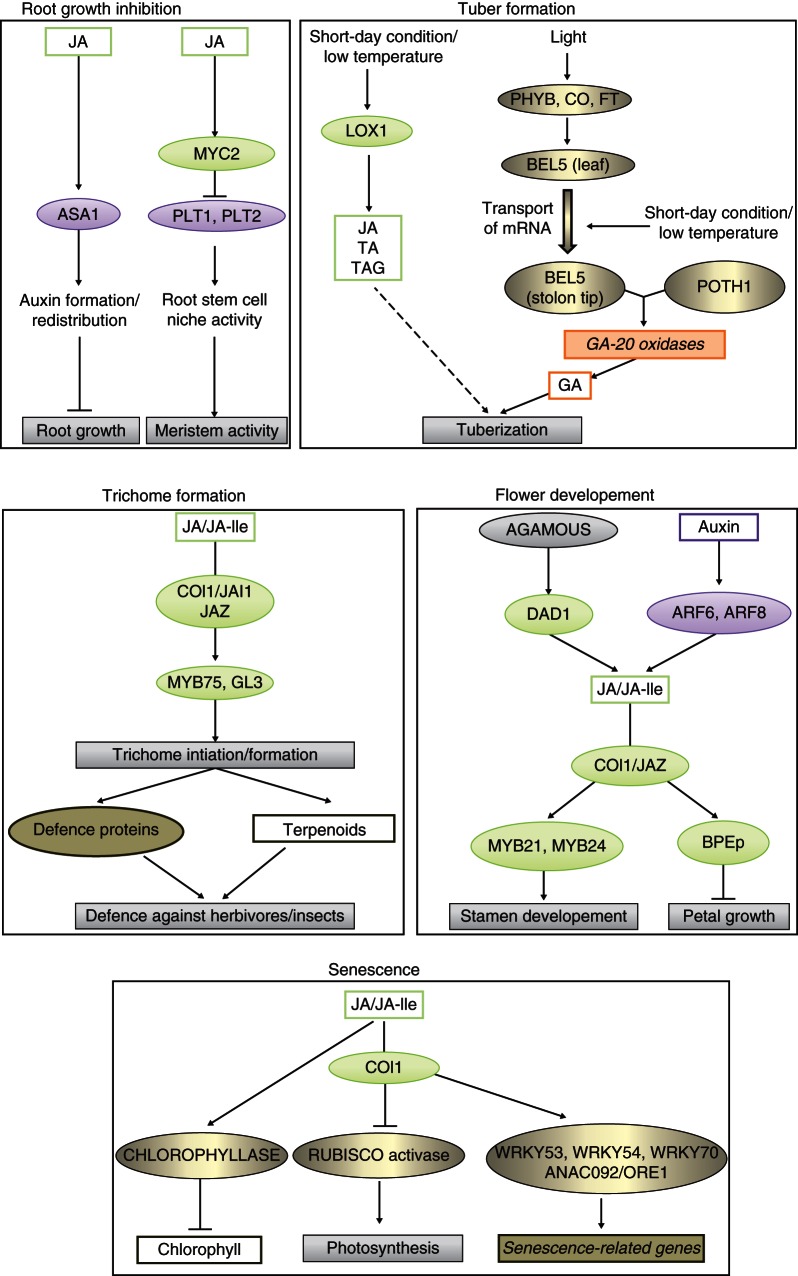Fig. 8.
The role of jasmonic acid (JA)/JA-Ile in plant development. JA induces root growth inhibition by stimulating auxin biosynthesis via anthranilate synthase α1 (ASA1) and inhibiting the expression of genes encoding the TFs PLETHORA 1 (PLT1) and PLT2, which ensure the maintenance and activity of stem cells in the root. In tuber formation, jasmonates [JA, tuberonic acid (TA) and TA glucoside (TAG)] might act directly after their rise following activity of LIPOXYGENASE 1 (LOX1). However, most importantly levels of gibberellic acid (GA) are regulated by the combined action of the TFs BEL1-like 5 (BEL5) and POTATO HOMEOBOX 1 (POTH1) at the promoters of GA-20 oxidase-encoding genes. In trichome initialization, JA/JA-Ile act via the COI1 co-receptor complex to activate the trichome-specific TFs MYB75 and GLABRA 3 (GL3), leading to formation of defence proteins as well as terpenoids. Role of jasmonates in flower development is depicted for Arabidopsis thaliana. The TF AGAMOUS activates the phospholipase A1 DAD1, but also auxin induces rise in JA/JA-Ile via the function of the TFs AUXIN RESPONSE FACTOR 6 (ARF6) and ARF8. Jasmonates induce COI1-dependently expression of MYB21 and MYB24, leading to proper stamen development, whereas expression of the TF BIGPETALp (BPEp) restricts petal growth. In senescence, jasmonates act on different levels. On the one hand, chlorophyllase is activated, which leads to chlorophyll breakdown, and RUBISCO activase is inhibited, which switches off photosynthesis. On the other hand, specific TFs, such as WRKY53, WRKY54, WRKY70 and ANAC092/ORE1, are induced, leading to expression of senescence-related genes.

